This recipe is dedicated to the memory of my late Popo.
My grandma was a wonderful cook who taught my mother how to cook
and in turn, my mother taught me.
In a beautiful country like Australia,
I will be forever grateful to them for helping me discover the joy of cooking.
~~~~~~~~O~~~~~~~~
“What??!! You mean there’s sei keok ser in these noodles?” I frantically asked my mum.
“Just be a good boy and eat it” my mum says. “Popo went to the markets very early this morning just so she could cooked this meal for us” she adds.
“Mum” I say sternly as I stare at her.
“I. Am. Not. Going. To. Eat. These. Noodles.” I stubbornly tell her.
I was perhaps eight years old when introduced to my grandmother’s bowl of soup noodles with, chunks of crispy roast pork, slivers of chicken and komodo dragon meat. This bowl of prized noodles was apparently a delicacy whenever the four-legged reptile was available in the local wet markets in Kuala Lumpur.
“Open your mouth and swallow this!” mum says as she puts a spoonful of this dreaded noodles in my face. “You won’t know the difference between chicken and sei keok ser” she says reassuringly.
She was right after all.
I eventually grew to love this bowl of noodles that will always remind me of my grandmother.
Suckling Pig Noodles
I’m glad the festivities of Chinese New Year for 2015 is over because there was so much good food to the point I felt a little sinful at times.
But over the years, I have learnt to pace myself during each of those CNY feasts to avoid over-indulging. Rather than pile up my plate with all kinds of food, my strategy is to cut down the carbs and taste small servings of each dish, then zero-in on the few dishes that I like best.
At the end of each meal, there is usually left-overs and the hosts would invite guests to doggy bag some food so their fridge would not be clogged up. This year, our friends Molly and KC gave us a bag of suckling pig ribs, bones and off cuts after a scrumptious feast at their home.
The bag of bones might look like a train wreck but there is one way to extract maximum flavour from such fragrant bones and turn it into yet another beautiful meal.
I’m thinking of my grandma’s recipe when all the left overs from CNY are put into a pot and made into another meal. It is her recipe using Chinese roast pork, shredded chicken and komodo dragon meat that has inspired this bowl of hearty noodles.
There was about thirty guests at Molly and KC’s CNY feast and we certainly gave this golden brown suckling piggy its due respect.
Its skin is crisp and crunchy while the succulent layer of fat and lean meat dipped into sweet hoisin sauce just melts away in the mouth … truly memorable pigging out moments!
Some of us stood around the table and got a few prized suckling pig ribs.
Gnawing the charred and smoky meat from these ribs is an experience in itself. Finger lickin’ good, you have the clean rib bone in testimony of just how tasty this suckling piggy is.
Preparing stock from suckling pig and Christmas ham bones
So the best way to extract the flavour from these suckling pig bones is to gently simmer them for a couple of hours.
It’s a good thing CNY is always just a month or so after Christmas. Each year, we would have a huge piece of smoky ham bone in the freezer from Christmas and this year is no exception.
The smoky ham bone goes into the stock pot with the suckling pig bones with a few stalks of coriander roots. Within a hour, our kitchen is wafting with smoky and charred aromas from the simmering stock.
Rehydrating Chinese mushrooms ~ two schools of thought
As the stock simmers, I am rehydrating Chinese shitake mushroom in cold water.
I have also diced some shallots and corinder, fresh red chillies and prepared some crispy golden brown garlic by microwaving diced garlic with some canola oil for about two minutes.
But there seems to be two schools of thought about rehydrating Chinese mushrooms though – do you use cold water or boiling hot water to rehydrate them?
I shall offer my own experience.
Boiling water will obviously rehydrate the mushrooms quicker if you are short of time. But the heat from boiling water also “cooks” and extracts most of the earthy aromas and flavour from the mushrooms, leaving it bland. This method is fine if you intend to further cook the mushroom and add the water into stews like bak kut teh, tau yew bak or Chinese slow-braised chicken.
My preference is using cold water or at the least, water at room temperature to rehydrate Chinese shitake mushrooms.
The time taken for these beautiful mushrooms to come back to life is not much longer compared to using boiling water. The advantage is the mushrooms are still sprightly and retain its flavour because the cold water does not “cook” the mushrooms. Gently squeeze each mushroom after thirty minutes to help them absorb more water. I have found the cold water becomes just as aromatic compared to boiling water.
In general, I would definitely recommend using cold water regardless of what the mushrooms are used for but especially so for quick stir-fried dishes such as omelettes, Chinese fried rice or meehoon goreng because they retain their earthy aromas.
Lukewarm water is like the gentle awakening by a lover in the morning. Boiling water is akin to the abrupt morning call of the boarding house master or the rude marching orders of an army sargeant that takes away your vigour in anticipation of a beautiful day.
Which do you prefer?
Transforming your stock into a world-class broth
As you would expect, bones from a suckling pig and Christmas ham will not be short of saturated fat.
The best tip I can give for this recipe is to simmer the bones for a few hours the day before. When the stock is cooled, put the entire stock pot into your fridge.
The stock would be gelatinous the next morning with a healthy (or unhealthy!) layer of coagulated fat on the top which can be easily skimmed off with a spoon. Depending on your health / recipe preferences, this fat can be used for Asian style stir-fry noodles or vegetables and I can guarantee flavour will be second to none. I choose to dispose the fat on this occasion.*
Heat up the stock, then remove excess meat from the bones and sieve the stock until rid of residue.
By this stage, the stock takes on a rich golden brown colour with fragrant charred aromas. Add a few sprinkles of white pepper and without needing to add salt (there is a fair amount of salt from the bones), this stock is already as good as any when used for soup noodles.
(*Note: The most environmentally friendly way to dispose cooking fat is to spoon it into a plastic bag and discard along with your wet rubbish. Do not dispose cooking fat down your kitchen sink as it will eventually contribute to clogging up the pipes in your city’s water system.)
Similar to Chinese shitake, I am rehydrating shredded wood ear mushroom in cold water and it is coming to life beautifully.
You can either buy wood ear mushrooms whole or shredded from Asian grocers and I prefer shredded for this recipe to save time.
Rinse them thoroughly in cold water a few times and these shredded wood ear become very sprightly and crunchy. Whenever I cook this dish, I love munching on these wood ear and shredded water chestnuts.
Suckling Pig Noodles – The Recipe
 Ingredients
Ingredients
- 1 kg roast pork bones, Christmas ham bones (alternatively, roast duck bones combined with raw chicken and pork bones work almost as well
- 6 – 8 chicken drumsticks, skinned and rinsed
- 2 – 3 large bunches coriander, diced, roots set aside
- 8 large Chinese shitake mushrooms, rehydrated and sliced
- 6 – 8 tablespoons shredded wood ear mushrooms, rehydrated
- 1 can water chestnut, chopped into small batons
- 1 large bunch shallots, finely diced
- 3 cloves garlic, diced and microwaved for 2 minutes in oil until crispy and golden brown
- 8 – 10 fresh red bird eye chillies, diced and mixed with soy sauce for dipping
- Noodles ~ depending on your preference, rice noodles, rice vermicelli, Italian spaghetti, macaroni (shell pasta), fusilli, casarecce siciliane or orecchiette works well
- Salt and white pepper to taste
Method
- Simmer bones in 3 litres of water with coriander roots, drumsticks and aromatic water from rehydrated mushrooms on low heat.
- After half an hour, take out the cooked drumsticks and remove meat from the bone and set aside.
- Continue simmering the stock for about two hours or until meat remnants from suckling pig and Christmas ham bones are falling off. Remove meat from bones and set aside.
- Let the stock cool then place entire stock pot in fridge overnight.
- Reheat the stock the next day and sieve until it is clear of all meat and bone remnants.
- Add salt and pepper to taste.
- Cooked preferred noodles, then place in individual serving bowls, add pulled meat from chicken drumsticks and suckling pig.
- Ladle the hot stock over noodles and garnish with diced shallots, coriander, crispy bits of garlic in oil and a sprinkle of white pepper.
- Serve pipping hot with freshly diced bird eye chilli in soy as dipping sauce.
~~~~~~~~
With the sweet crunch of water chestnuts, shredded wood ear mushrooms and earthy shitake, it is difficult to decide which ingredient is the hero.
The suckling pig and Christmas ham bones are definitely contenders. Without them, this stock will not have the charred aromas of roasted and smoked meats.
Laced with the nutty crunch of crispy garlic that adds a toasty flavour, this is one of the heartiest bowls of noodles. And the only place you will find these noodles is in your very own kitchen.
One thing is for sure … there is no komodo dragon meat in this recipe. But then again, I have my Popo to thank for her inspiration.
So dear readers, what is your favourite dish to cook with Christmas or Chinese New Year left overs?
*Suckling pig was ordered from KW Barbeque Shop.
KW Barbeque Shop
9 The Crescent, Flemington
New South Wales
Tel: +61 2 9746 2891
Opening hours: Lunch and dinner 7 days




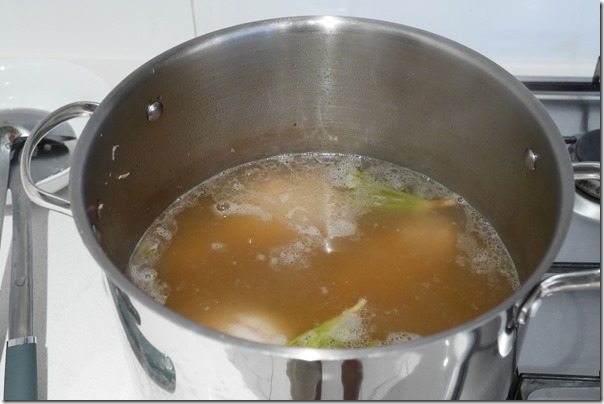
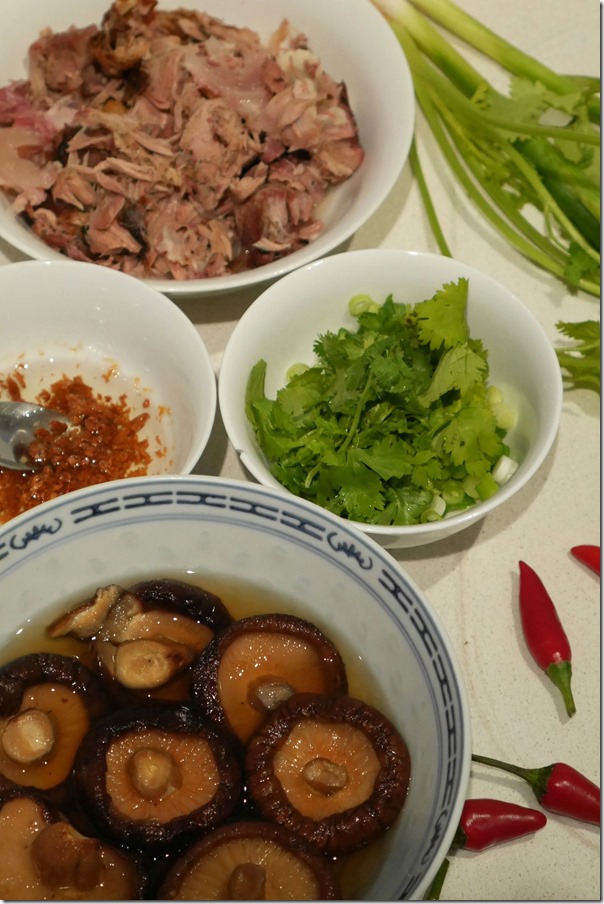



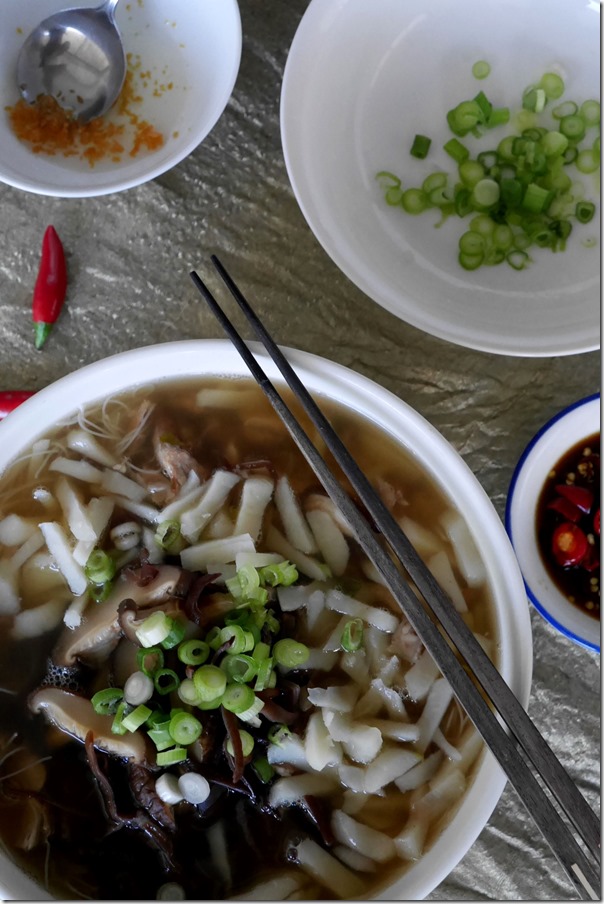





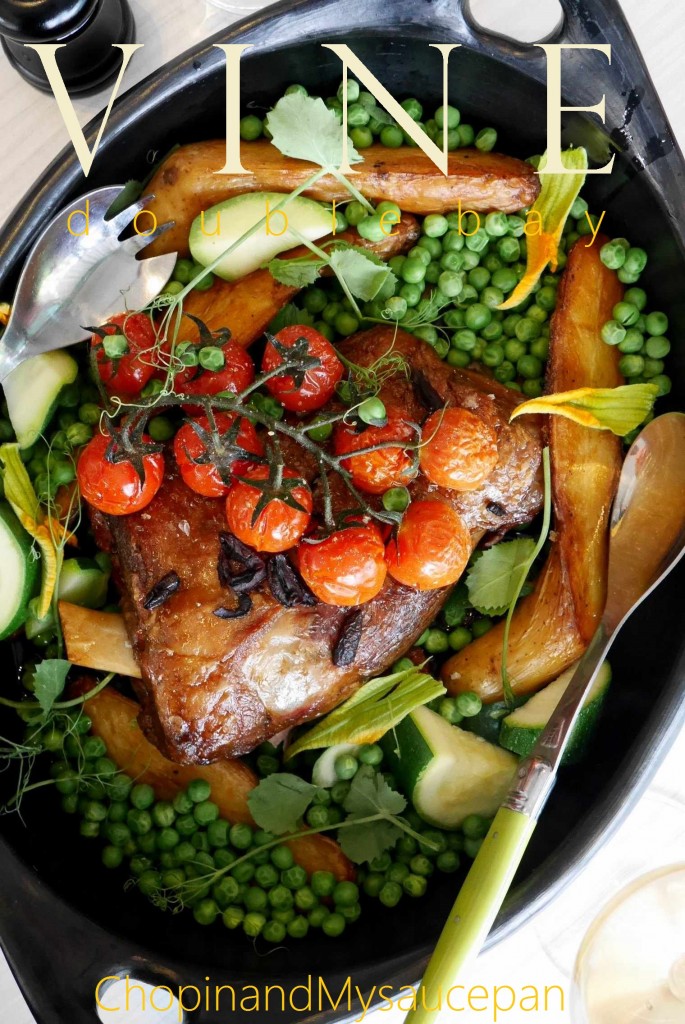







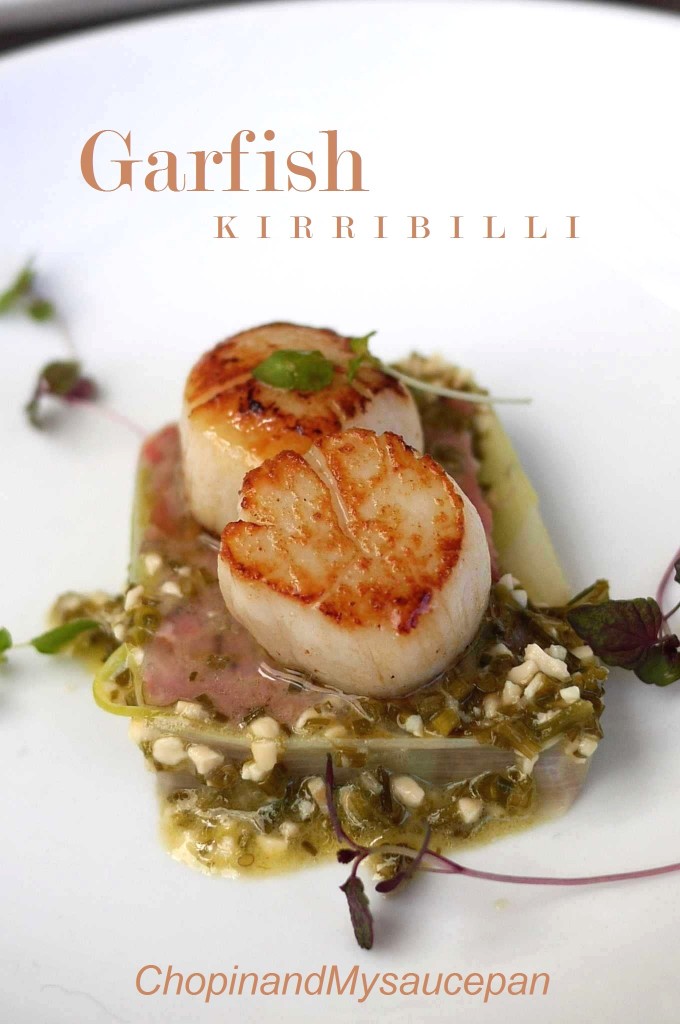
















































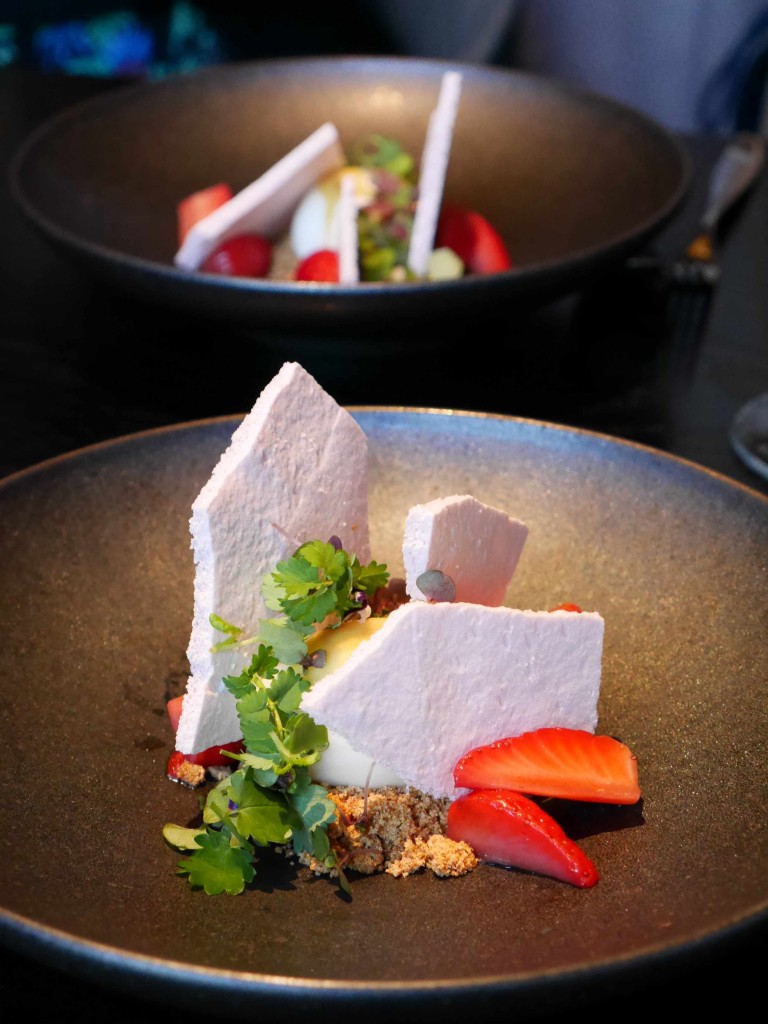



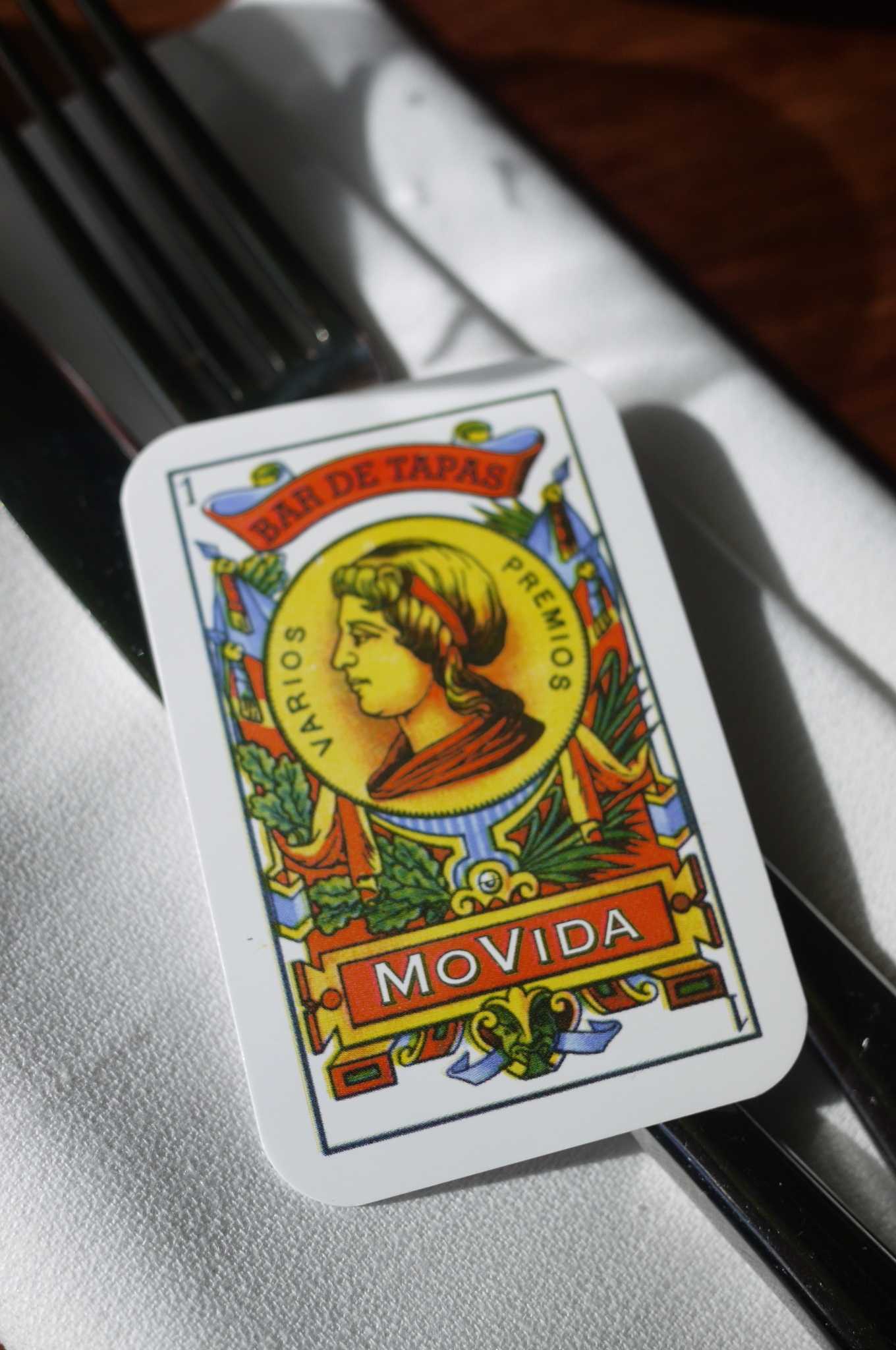






























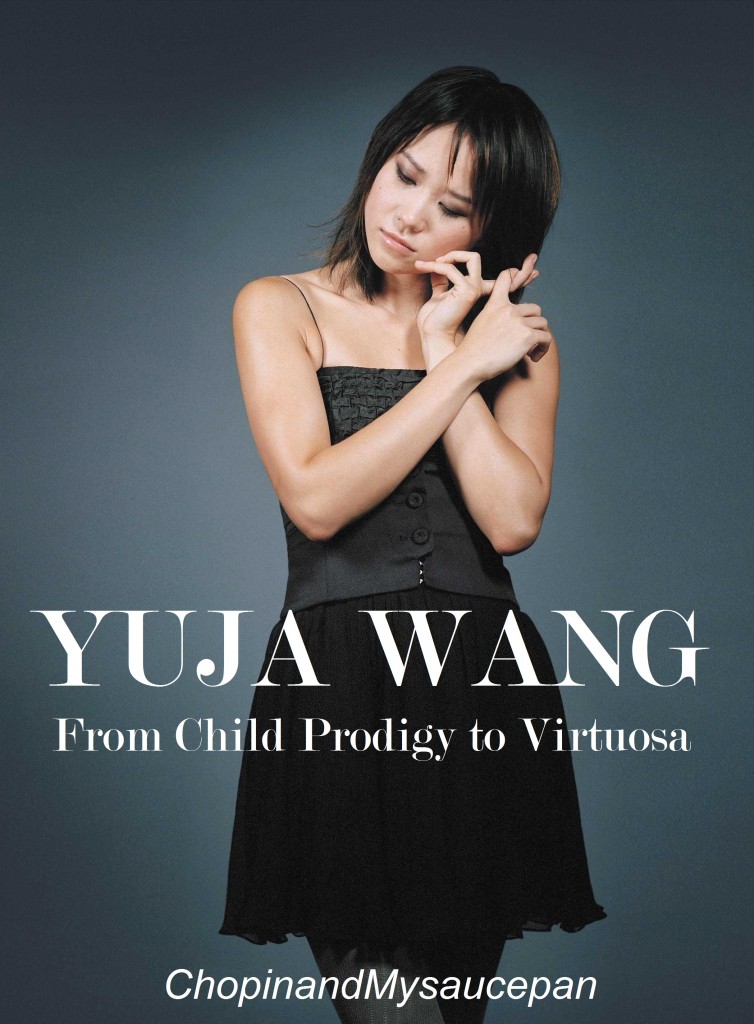










I am literally melting into a puddle of jealousy here. Suckling pig….I love it soooo much…..KW Barbecue will be the next place I try! last time we got a half from Burwood. Thanks for the tip! And for the visions of you as a stubborn stamping 8 yo refusing to eat your noodles!
Thanks for the tip! And for the visions of you as a stubborn stamping 8 yo refusing to eat your noodles! 
Oh, I wished I lived closer – I certainly would travel across Sydney to enjoy this with you! Great tip about the mushrooms too – thanks.
I can’t remember who told me I should rehydrate mushrooms in cold water but they said the same thing you did. Before that it was always boiling water for me.
That suckling pig is gorgeous! I could almost see myself picking up a piece of that meat and dipping it ever so slightly into the hoisin and into my mouth. Brilliant.
Your noodles are a pure delight.
Oh my gosh my mouth is watering. What a great recipe -looks delicious!!
Mmm that pork loooks amazing!
I can see why you have so much affection for this dish. And a lovely tribute to your Popo too!
Nice recipe and thanks for sharing! This is a good way to use leftover suckling pig, and like you we also have lots of left over when we serve one during special occasions where friends and families bring some home. We usually make lechon paksiw (http://angsarap.net/2013/10/03/lechon-paksiw/) and this one is a good alternative as we love noodles.
Komodo dragon in noodles soup? Oh my oh my.